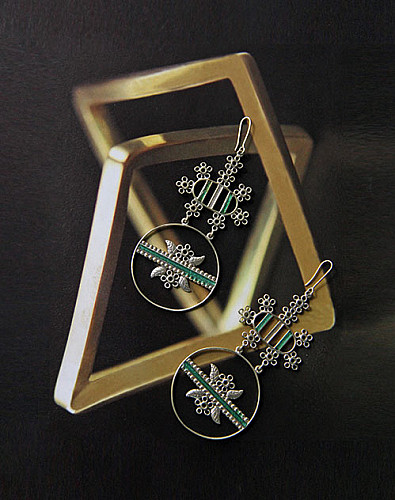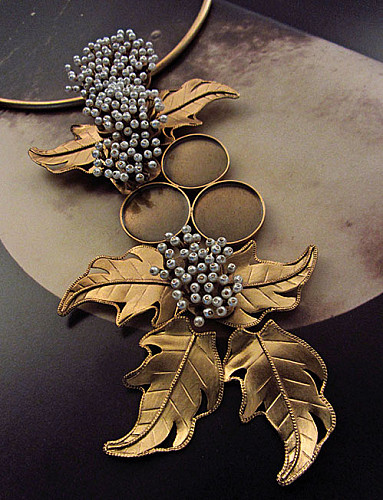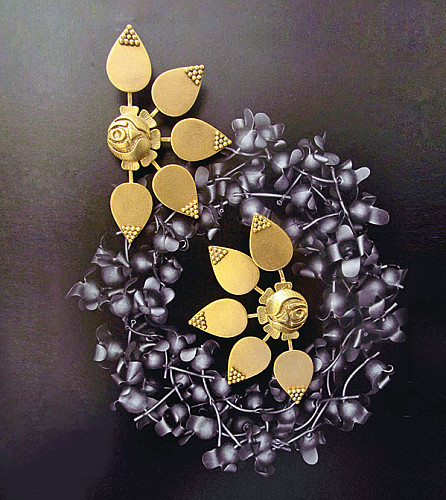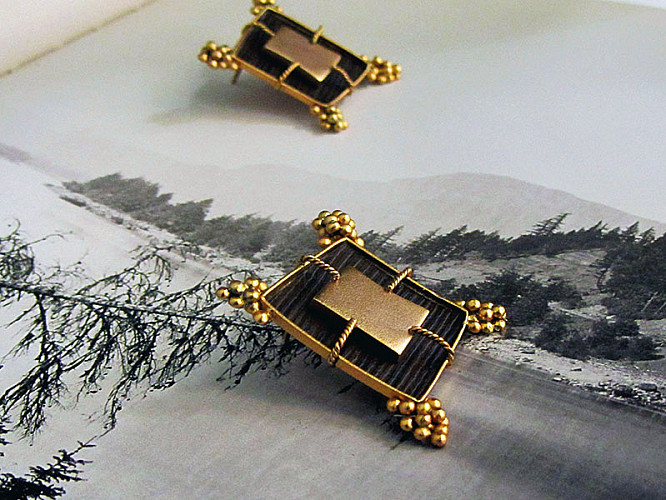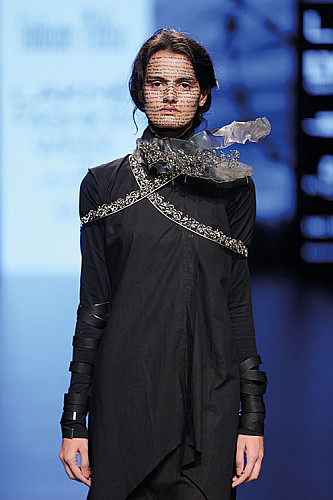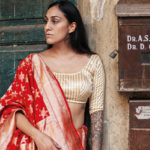How Suhani Pittie Quietly Revolutionised The Jewellery Industry
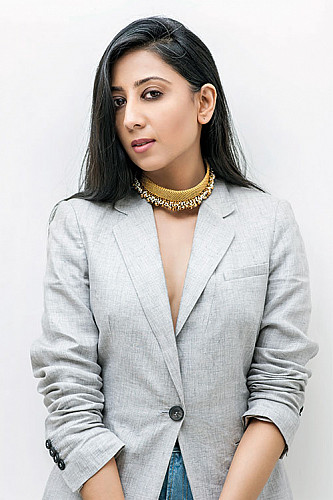
“To be a pioneer means to champion the authority of your own thoughts…your own creative imagination. To bring every genius idea forward. To be precise, but to also allow spontaneity.” Suhani Pittie’s words describe work that may — and should — lead to diverse opinions; for something to be fresh and path-breaking, it must create discomfort. Hyderabad-based Pittie’s jewellery does just that. She describes it as “luxurious but melancholic” and when you hold one of her designs in your hand, you understand exactly what she means. It’s delicate but strong, fine but chunky; it’s bold and yet has elements of the traditional, all the while being “respectful of India, its craft and heritage”.
The label that began formally in 2005 can be considered a trailblazer for its welding of the modern and the conventional but, more importantly, for growing into a self-sufficient business catering to Indians the world over. There is a flagship store in Hyderabad, an online shopping portal on suhanipittie.com (besides being available in offline retail outlets like Ensemble and Aza across the country, and abroad, commissioned by the Museum of Arts and Design) and a new line ‘Dooi by SP’ on Myntra, while also undertaking corporate and festive gifting, wedding lines (which include jewellery for the bride, gifts and decor) and bespoke pieces. And if that isn’t enough, Pittie has also partnered with a technology company which works on a CSR model in the renewable energy space in rural India, called socialsolar.in.
Kolkata-born Pittie’s career choice can be traced back to a rudimentary moment — when she punctured a piece of old silver and bent it; a relative wore it around their neck and someone said, “That’s magic!” Pittie recalls, “When I started, it was an open ground. With my love for India stemmed this deep desire to show new, innovative possibilities of age-old craft and, via that, to explore my own talent. I had never intended to get into this field. Today, it’s no more about me. I want to build a remarkable company, generate more employment, expand skill sets amongst rural women, and raise the standard of living of all our employees, to ensure that they can afford to send their children to school. I’m reaching out to a bigger universe — en route to building something unique…a company with a great product and a warm heart….” What’s striking is what she counts as her greatest achievement. Her first karigar is still working with her today.
Pittie began, as many creative souls do, on a whim, not armed with knowledge or market analysis. “I was new to Hyderabad. I hired one worker. I made 12 pieces with very little capital. And everything got sold. How do you work with metal, when you don’t know how to do it yourself?” As she struggled to find a foothold in a competitive industry, she read every book on the tools and manufacturing of silver. Even today, when 20 to 25 unique pieces are sampled daily, Pittie believes the brand is exactly what it started out as. “Unapologetically individualistic. There is heart in every piece. Non-conforming, yet adhering to values. Destabilising yet disciplined. Beautiful yet rebellious. Paradoxical, really.” And she continues to put a lot of herself in her work: “My jewellery is very reflective of my personal journey at that moment of time. The silence of metal surfaces in tandem with the rebelliousness of design.”
Despite having a corporate structure with departments and managers, projections and targets, Pittie takes a distinctive and free-spirited approach to design. “I execute everything in this department. It’s very emotive — what I’m feeling at the moment, what’s moved me. It could be turbulent. It could be romantic.” Once the thoughts and initial sketches are in, she begins collaborating with her production manager to work out their feasibility. “I was expecting alarm — the day I told him that we are going to make our own metal because I want ‘greyish silver’. But he looked at me and said, ‘That’s what we always do. We invent, no, ma’am?’” She works with a vast range of materials: copper, silver, steel, brass, thermocol (styrofoam), Bakelite and acrylic, to name a few. “I’m not schooled in this field. So it has become my playground…. It was not frivolous when it started and it isn’t frivolous now. The aim has always been to be brave and soar.”
Pittie is the youngest of three artistically-inclined sisters — Kolkata-based fashion designer Anamika Khanna, known to have modernised traditional Indian garments, and Mumbai-based Suruchi Choksi, an abstract artist. “The age gap is tremendous (ten and seven respectively). We didn’t get much time together. I spent all my time outside the house — I was head girl at my school and into extracurricular activities: elocution, debate, quiz, dance, football….” Pittie, who’s been vegan for 20 years, is a graduate in Indian classical music, and was once in a band. Despite her petite frame, she describes herself as “tough” and finds comfort in a “personal, unpretentious” home that has “a lot of books, monster trucks and only beanbags to sit on”.
By those who know her, 36-year-old Pittie, who works in tandem with her husband Stouvant Pittie (a director with the company), has been described as childlike in her irrepressible affinity for a fairy-tale world that soaks up imagination and spits out creativity. You can tell, because she fangirls over Harry Potter — “J.K. Rowling made me believe it was possible even when it seemed impossible. I’m definitely a Gryffindor, but I want to be like Luna Lovegood — so pure and wise.” And then, the woman who believes in magic has a reading list that is steeped in reality. She hasn’t missed a single edition of Time magazine for 14 years, and pours through The Economic Times daily, is interested in public leaders, economics and administration, is currently on Music of the Spinning Wheel: Mahatma Gandhi’s Manifesto for the Internet Age, and watches American entrepreneurial reality show Shark Tank. Pittie, despite the success, admits that she “can’t slow down”. She thrives on “razor-sharp focus” (undiluted by social media), enjoys her own company and of those whom she describes as progressive. “People with unique ideas and clarity. Who debate and challenge. And I’m blessed to have some in my life. It keeps the machine going.”
Suhani Speak
“The current non-precious jewellery market in India is seeing something incredible and unprecedented. It’s also a circle really. Customers need more options, hence are more accepting. That encourages more individuals to take the risk and get into the field. Jewellery, which held ‘locker sentiment’, is now being seen more for composition value and its voice. It’s a great time to be in the industry: challenging but so much more welcoming! More products, more experiments and diverse raw material have been entering the market. Non-precious jewellery could be such a strong dialogue of now, for now.”
“My buyer is aged from 17 to 72. They are women, from every part of the country, who are not afraid to wear their values like a badge.”
“I have never been a victim of trends, and I don’t desire for my clients to ever be. I want to give them memories, stories, beauty and vulnerability. I don’t want to give them ‘objects’ of today. I want my pieces to be purveyors of pure design and at the same time a narrative of the times we live in.”
“You are emphasising your own expression, your own ideals and inspirations and you are designing the future. Your humble attempts can change the landscape of an industry. To be propelled by love and beauty and instances and events around the world and to physically craft them into tangibility…that is extreme responsibility.”
“Kolkata and Hyderabad both inspire me. They have such strong cultural influences and heritage. Kolkata inculcates in you discipline. It encourages you to debate at 5.30 a.m. next to the chai-wallah. Hyderabad is such a beautiful cosmos of old and new. There is so much tehzeeb in the culture, language. It teaches you to respect. So much of what I am is because of these two cities.”
“I have a brooch which is a miniature grandfather’s clock that I really treasure. It’s all minakari work, complete with a cuckoo bird that pops out when wound. Besides the design, it’s also technically superb. It boggles your mind that without machines such marvels could be made. There are some brooches I have which are made of the tiniest mosaic pieces (0.5 mm by 0.5 mm). The patience the artist must have had!”
“Our show, Nowhere People (LFW 2016, focused on the plight of refugees), broke me and pulled me together on many levels. To take a painful topic and show jewellery that was distressed and broken, yet wearable and beautiful…. To have connected to the vulnerability of this paradox in a parallel world, with the audience, where they hugged me and cried…. To take a poem by Kenyan poet Warsan Shire Home, and translate each syllable of it into metal, that was, I would say humbly, my greatest moment.”
Related posts from Verve:
Verve Trending
Sorry. No data so far.
us on Facebook to stay updated with the latest trends

